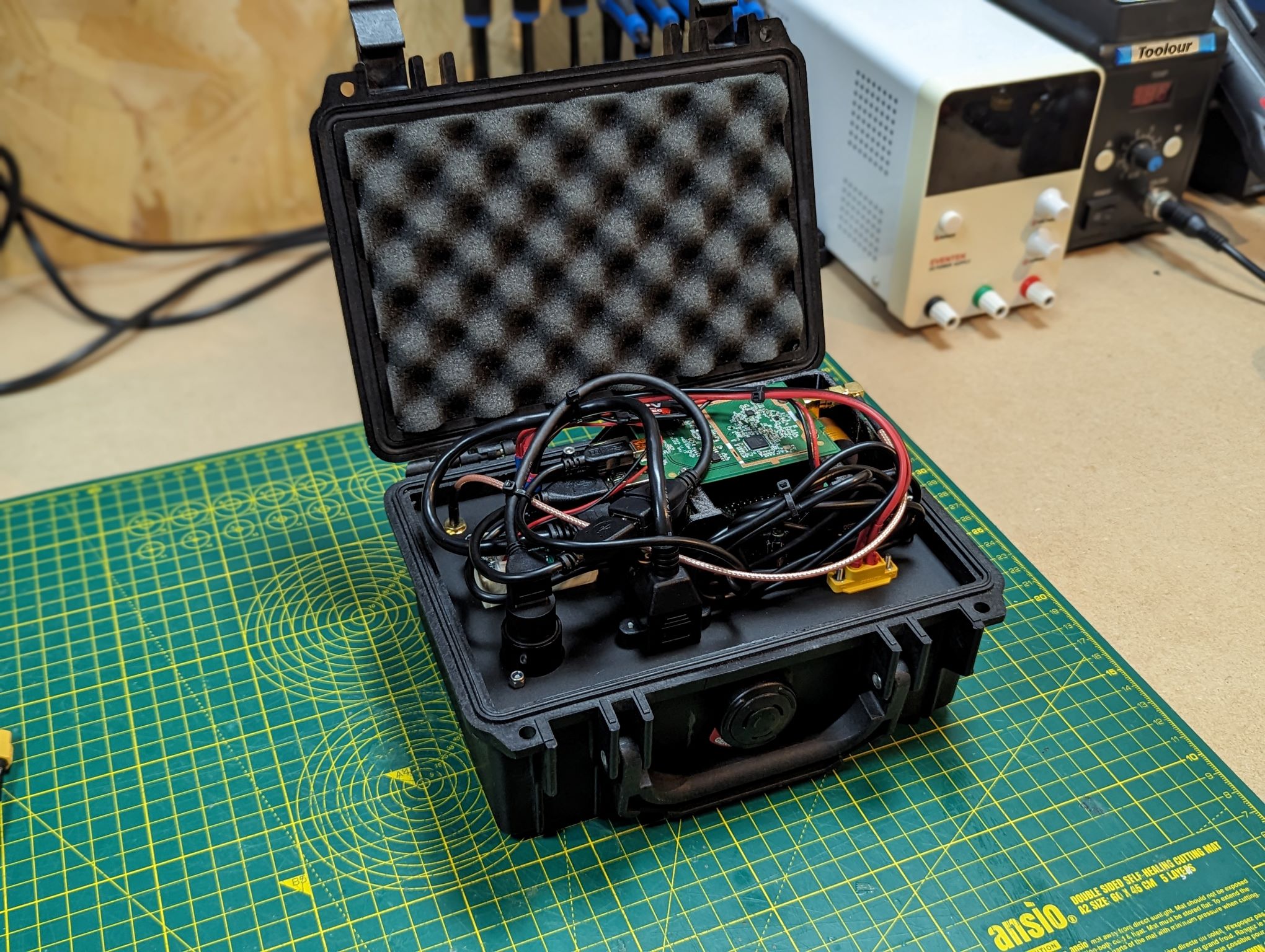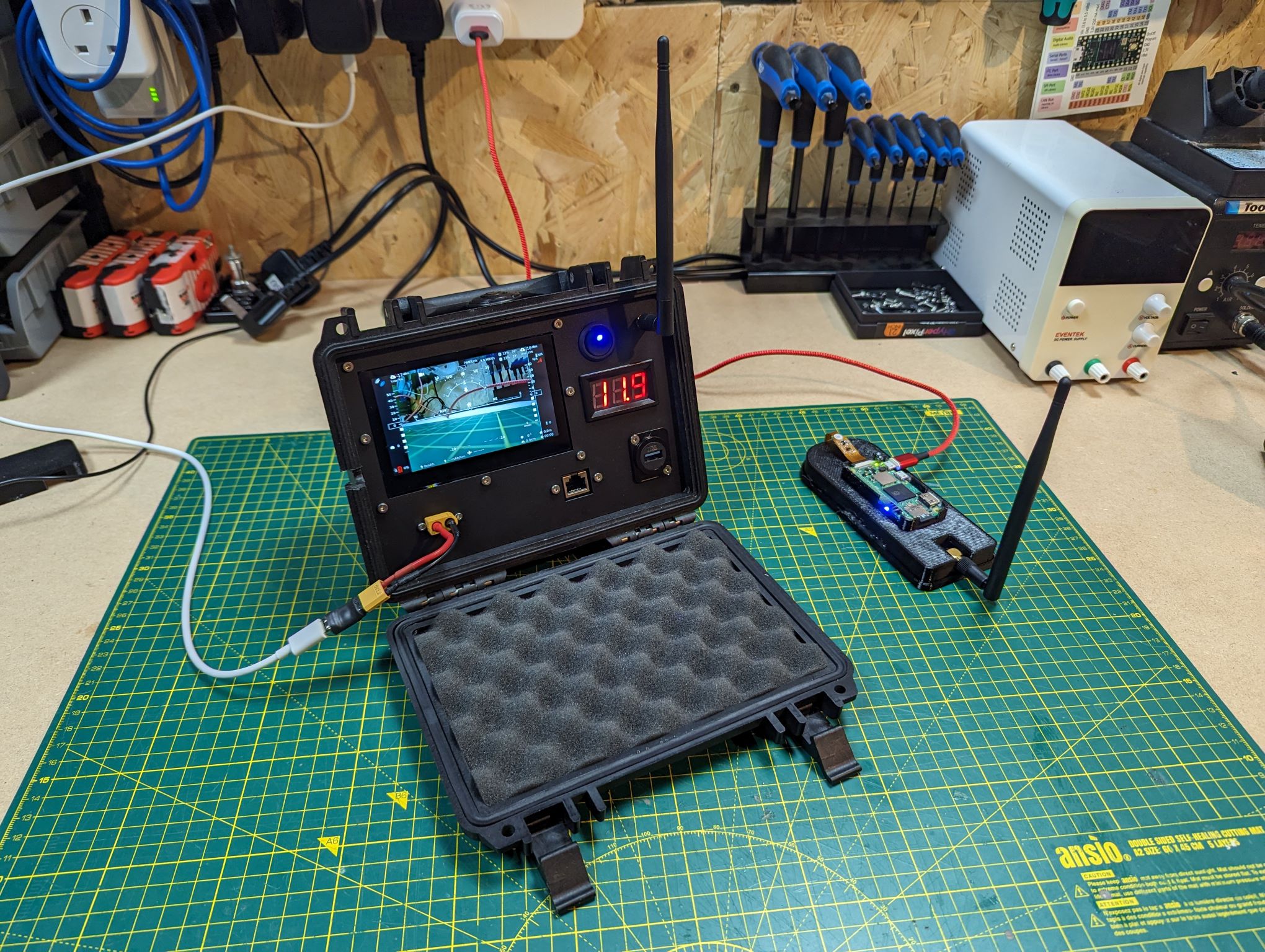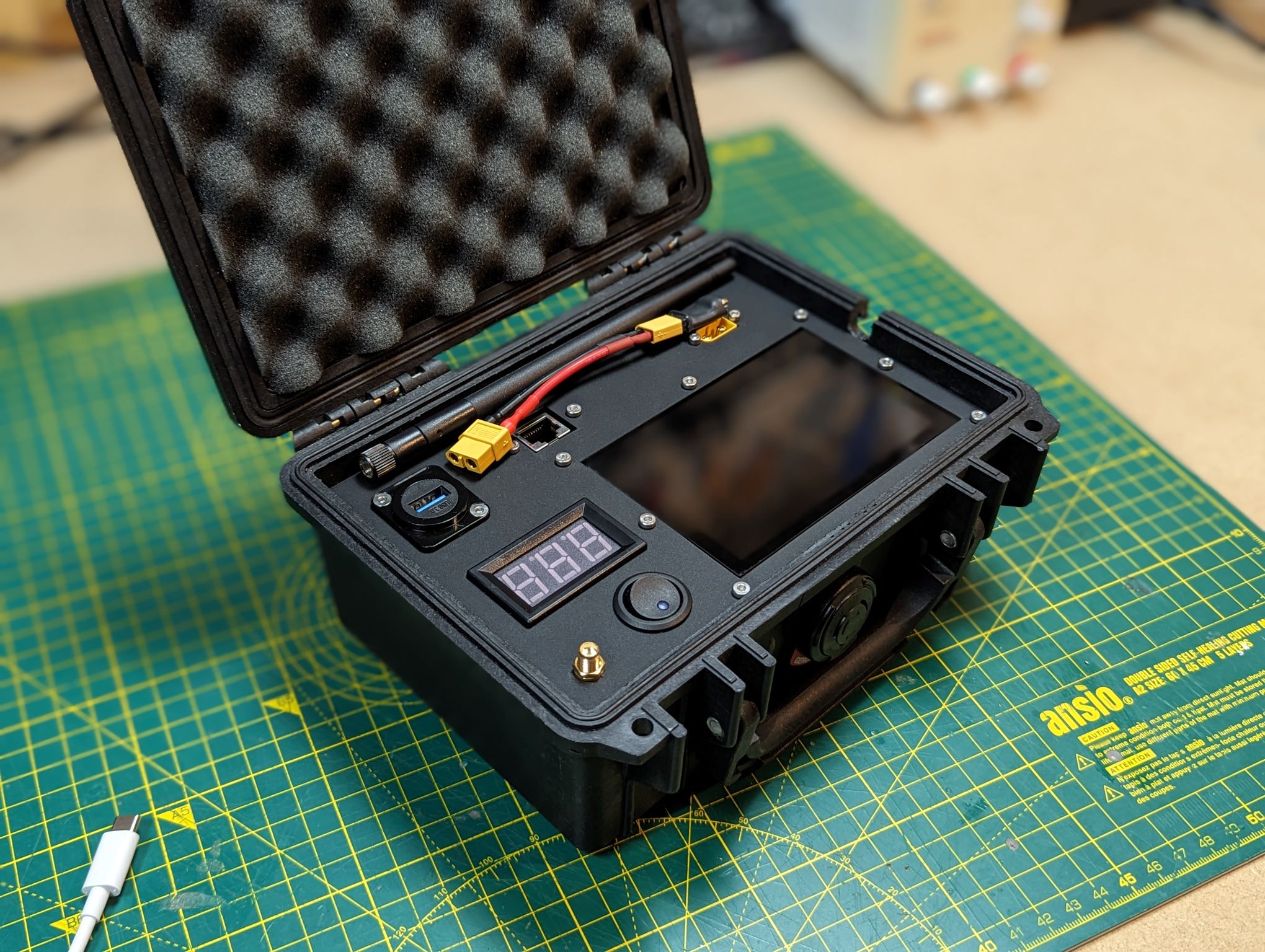Raspberry Pi FPV Ground Station
I needed a compact, easy to use, low-ish cost FPV ground station for use with drones/rovers/boats that provided a low-latency video link, two-way telemetry, and RC control with reasonable range. For professional work with less budget constraints, the Herelink is my go-to, but at £900 for the controller and Air Unit (without camera) it’s not always a sensible option for personal projects. Instead, I built this lower cost Raspberry Pi based ground station to be compatible with some of the more open digital FPV transmission systems.
I am using OpenHD at the moment, but there are plenty of options that in theory work on this hardware, such as RubyFPV, all of which are kind of evolutions of the original wifibroadcast project. They all aim to provide a low-latency digital transmission system for HD video, two-way telemetry, and RC controls - mostly using a Raspberry Pi and one of the supported Wi-Fi adapters on each end. The supported Wi-Fi adapters use a specific range of chipsets that can be used in monitor mode which gives better range, lower latency, and more graceful signal degredation and recovery.
For the enclosure, I am using a Peli 1120, mostly because I had a spare one laying around, but also as they are small, robust, and weathersealed (if you pretend mine doesn’t have holes in it from previous projects).

I also had a spare small Waveshare DSI touchscreen that was the perfect size, so that was used as the starting point for the CAD, along with a 3D model of the 1120 inner surfaces. On the rear of the screen I mounted a Pi 4, and the Wi-Fi adapter. Alongside that I added a voltage display, an on/off switch, an XT-60 power input, and panel mount ethernet and USB connectors.


The reality is a lot more messy than the CAD, but with a few cable ties everything is pretty secure, and it’ll never be seen from the outside!

Once assembled, the software of choice can be installed to the Pi SD card. As mentioned above, I am using OpenHD at the moment, but other similar projects are also compatible - or a more standard Raspberry Pi OS install is possible and works great. For systems like OpenHD, the USB connector can be used for RC control using something like a joystick or Xbox controller. A keyboard and mouse could also be connected. On the right of the ground station is the current ‘air unit’ which is a Raspberry Pi Zero 2, a CSI camera, and another supported Wi-Fi adapter. I won’t go into too much detail about that, as I am still making improvements.

The XT-60 power input is connected to a 5V regulator that can take a Li-Po battery input between 2S and 6S. I am using a little Aliexpress USB-C PD to 12V board which makes powering from a USB PD AC adapter or battery super easy. This power adapter and the antenna can be simply stored against the panel, and the lid foam prevents anything moving around inside too much.

Overal, the hardware seems to be working well, and I have a selection of compatible software options to use for FPV, or for a more standard Pi installation. Next, I need to finish the air unit side, and do some more testing for range and control.